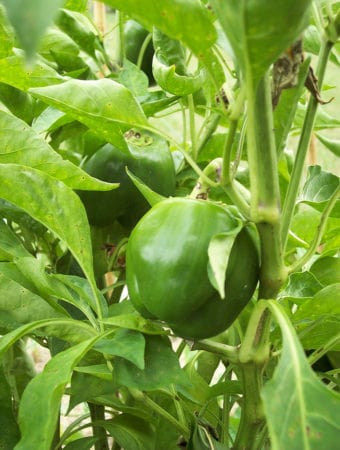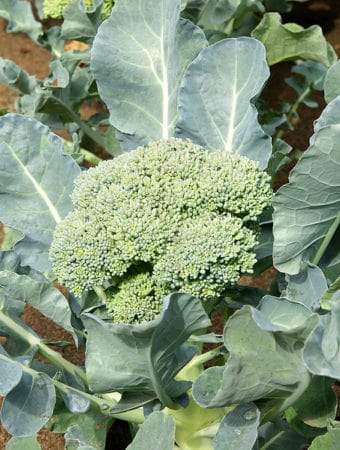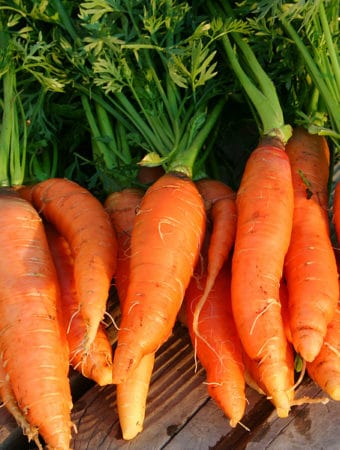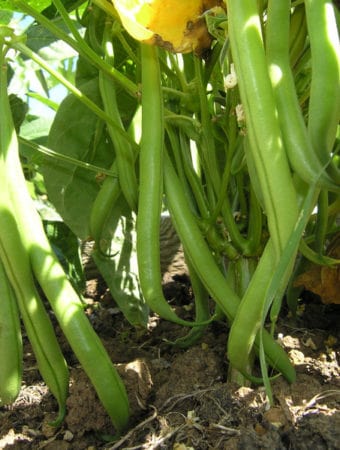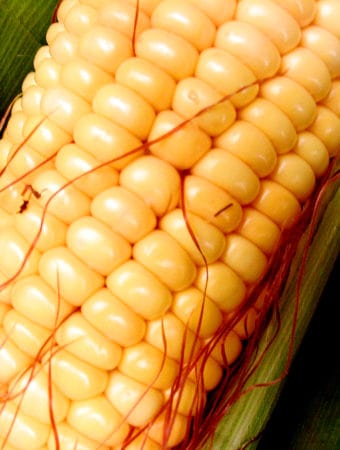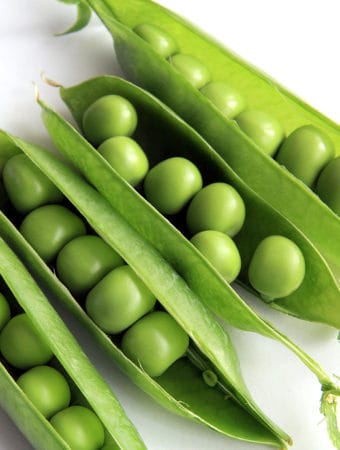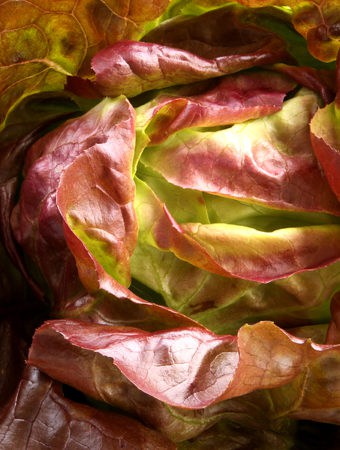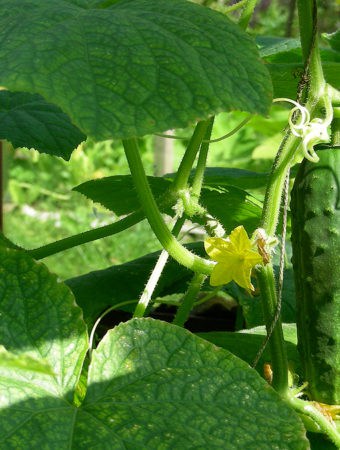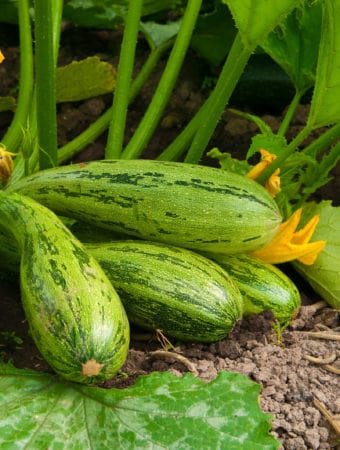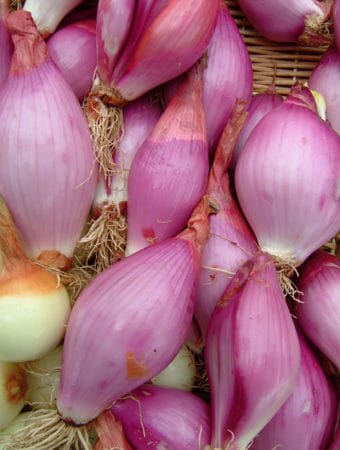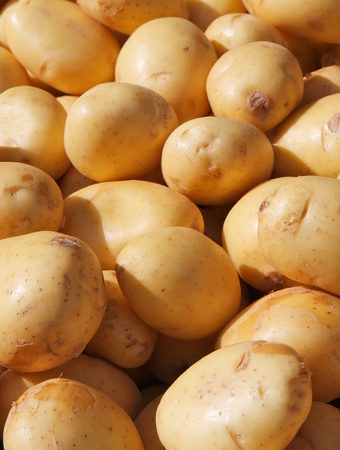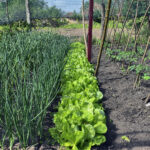May is the month to get your summer vegetable garden growing in earnest. Warm-season crops can be sown in the garden or transplants set out. The soil in most vegetable gardens in the Northern Hemisphere should now be warm enough for summer crops. If you live where nights can get chilly, keep row covers at the ready. Crops that were started indoors last month should be hardened off before they are planted out in the garden.
In warm regions, tender starts–tomatoes, peppers, eggplants, squashes, and beans–can go into the garden early this month. In cool regions, be sure night temperatures are averaging 55°F/13°C or warmer before setting out tender starts–that may mean towards the end of the month or even in June.
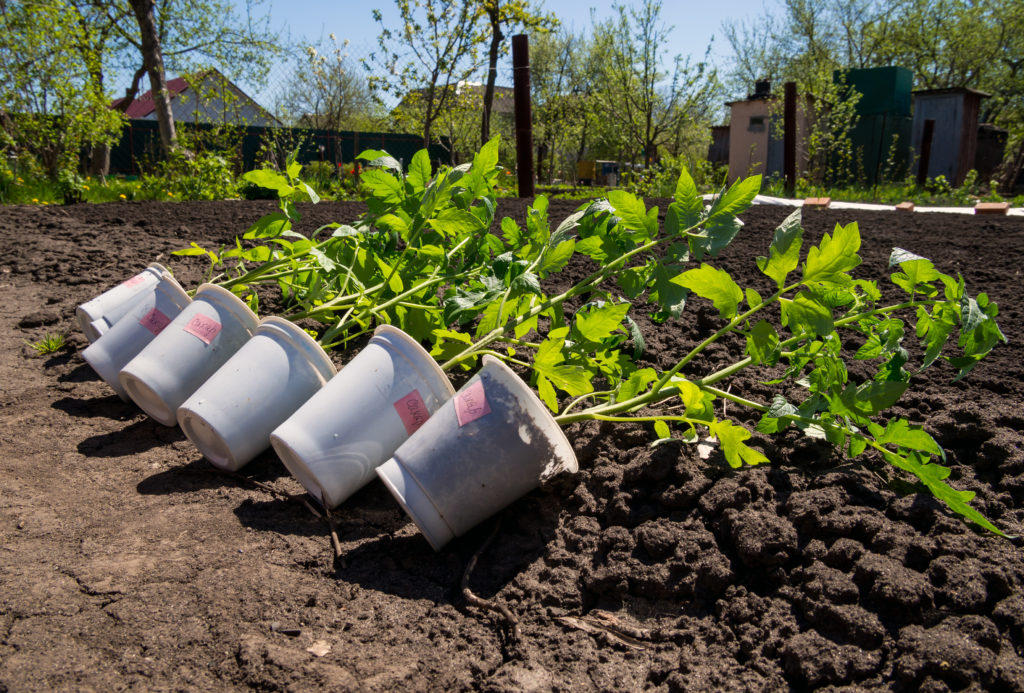
The month of May will bring Spring weather to almost all regions of the Northern Hemisphere. May is the time to direct sow warm-weather vegetable seeds in all gardens. Once the last frost is past, vegetable seedlings can go into the garden as well.
Good Products for Raised Bed Growing at Amazon:
- Galvanized Raised Bed 8×3
- Cedar Raised Bed 4×8
- Elevated Cedar Planter 4×2
- Walk-In Greenhouse Tunnel 15x7x7
- Row Cover for Freeze Protection 10×30
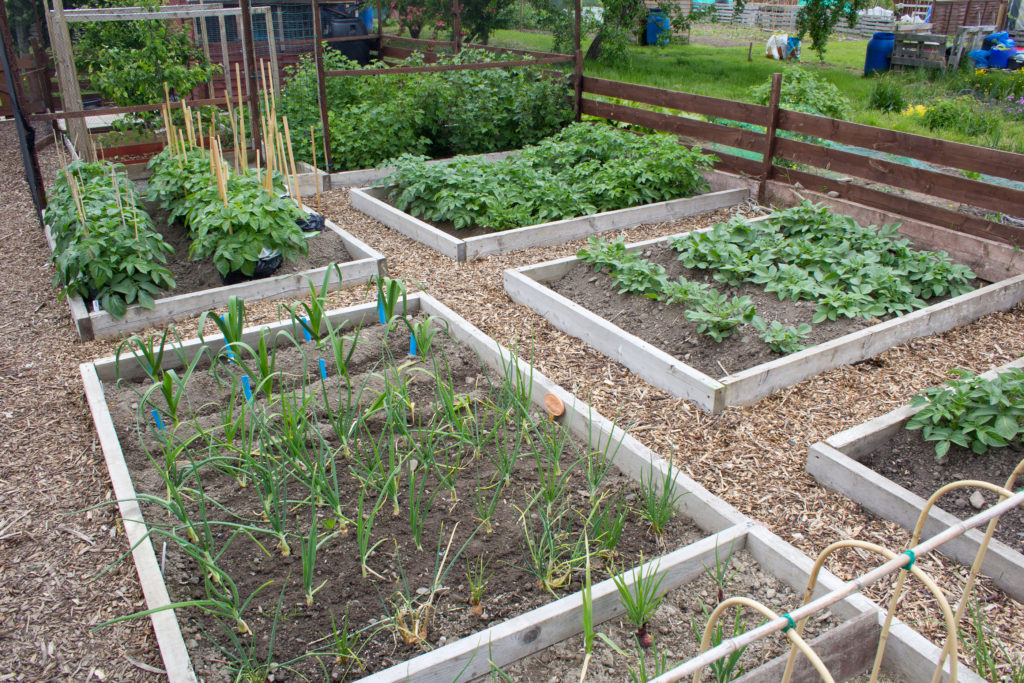
May vegetable planting and transplanting
- Few seeds will germinate if the soil temperature is below 45ºF (7ºC) and warm-weather crops will not thrive until the night temperatures stay consistently above 50ºF (10ºC). Follow the high and low temperatures for several days if you are unsure if the time is right to begin sowing and planting out warm-season crops.
- If you do get started and temperatures unexpectedly dip, use horticultural fleece or cloches to protect summer veggies from danger.
- You can minimize transplant shock if you hold off putting melons and summer and winter squash seedlings in the garden until 10 days after the date of the last expected frost. Peppers and eggplants can be transplanted into the garden two to three weeks after the last frost.
- Herb starts like dill, oregano, sweet marjoram, cilantro, rosemary, sage, and thyme can be transplanted into the garden this month. Make sure the weather is settled warm before you plant out basil and lemongrass.
- Start sowing vegetables without protection if the soil and nighttime temperatures have warmed.
- Thin beets, carrots, lettuce, radishes, spinach, and other half-hardy and hardy seedlings were planted late last month. As crops are harvested, plant successions spring crops or start introducing summer crops.
- Early in the month, prepare outdoor sites for cucumbers, squashes, and tomatoes. Erect supports for runner beans, and place stakes, poles, and trellises in place for tall and climbing crops.
- Stake tomatoes and tie them gently to the stakes.
- Remove cloches from broad beans, carrots, and peas.
- Mid-month sowing: sow seeds of beans, lima beans, corn, okra, squash, cucumber, cantaloupe, Chinese cabbage, and other tender vegetables and herbs after temperatures have reached 70sF.
- Sow cucumbers in mounds enriched with plenty of well-rotted manure and compost.
- Set out transplants after mid-month: tomato, eggplant, pepper, and sweet potato.
- Set out sweet potato slips on a cloudy day. Form a little mound of soil over young potato shoots to protect them from frost.
- Pinch out the tips on broad beans to encourage a good pod set and to deter attack from aphids.
- Make sowings of salad crops and summer spinach.
- Stop watering onions, garlic, and shallots when the foliage begins to turn yellow.
Harvesting early crops
- Start picking broad beans when the pods are finger thick.
- Continue to cut asparagus. As the asparagus harvest ends, cut back female plants with berries.
- When peas stop producing, cut vines to the ground (do not pull allowing their roots to fix nitrogen in the soil). Replace early cool-weather crops with summer crops.
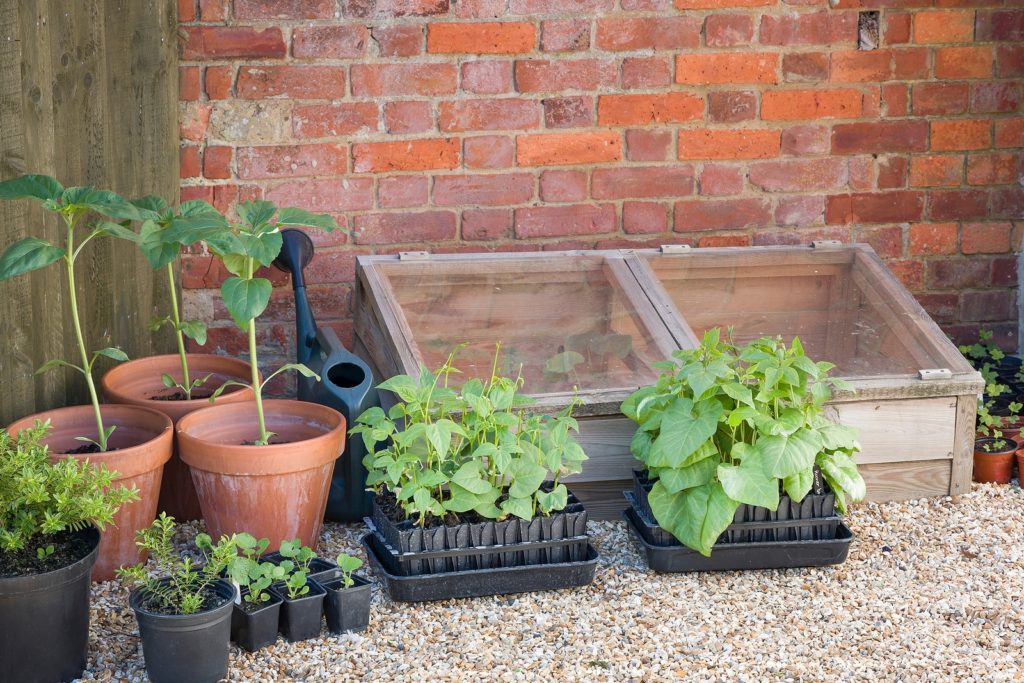
Greenhouse and cold frame
- Sow successions of tender vegetables such as tomatoes, peppers, cucumbers, and runner beans to plant out later.
- Plant greenhouse tomato plants in large pots, or plant them in grow bags.
- Water and feed tomatoes, cucumbers, and peppers, never letting the soil dry out. Remove side shoots from tomatoes.
- Attach slings or nets to greenhouse melons as they swell.
- Introduce biological controls to keep down pests such as greenhouse whiteflies and spider mites.
Succession planting
- Make succession sowings of early crops: beetroot, carrots, lettuces, and turnips. Make successive sowing of lettuce, salad crops, and summer spinach, turnips, runner beans, green beans, endive, radishes, and kohlrabi.
Late-month sowing and transplanting
- Sow sweet corn outdoors in mild areas when further frost is unlikely. Most vegetables can be sown now, so check the packets.
- Sow French and runner beans, pole beans, long-rooted beets, sea kale, salsify, and sweet corn.
- Plant out late-summer cauliflowers and in the north Brussels sprouts. Plant vegetable seedlings such as cabbages, cauliflowers, celery, sweet corn, tomatoes, and marrows. Plant outdoor tomatoes, and tie them gently, but firmly, to stakes to secure them.
Herb garden
- Plant or pot up basil seedlings.
- Take cuttings of pot marjoram, rosemary, sage, and thyme.
- Divide and transplant perennial herbs.
- Divide any straggly mint and thyme plants.
- Plant or pot up basil seedlings.
Pests control
- Watch for aphids on broad beans and root flies on cabbages, carrots, and onions. Keep after weeds.
Feeding and watering
- Give a side dressing of compost tea to half-grown plants.
- Keep all plants watered and well-mulched.
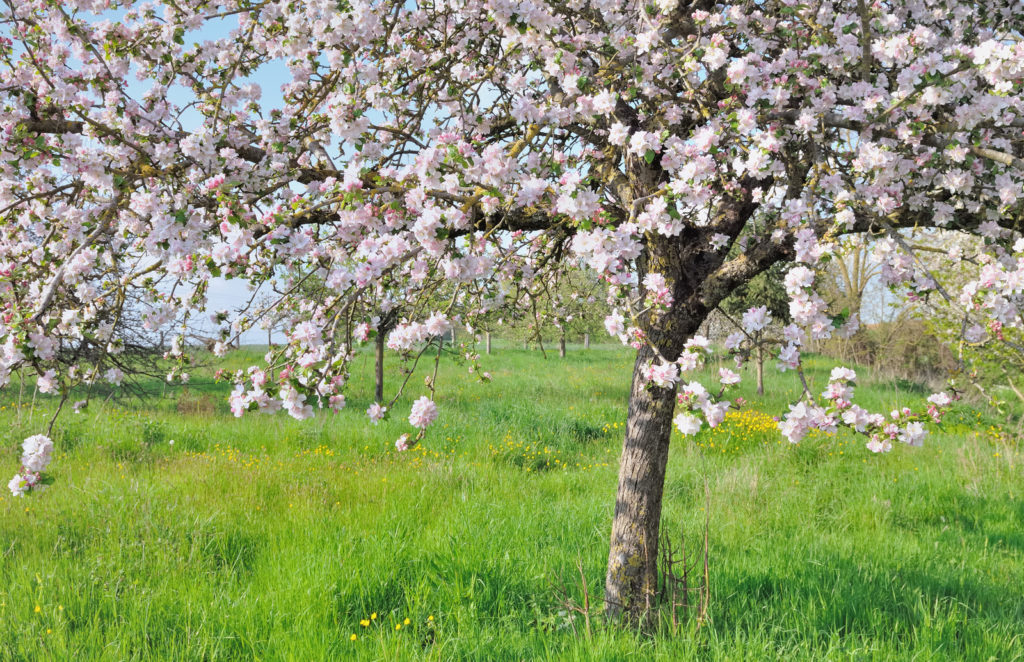
Fruit trees
- Feed summer-fruiting plants with potassium sulfate to promote good flowering and fruit. Control weeds around the bush and cane fruit.
- Thin the fruit on apples, peaches, nectarines pears, and plums when they reach marble size. Thin heavy-cropping nectarines and peaches when the fruit is ½ in (1-1.5 cm) in diameter.
- Water new plantings deeply if the weather is dry. Water plentifully when the fruit is swelling.
- Hang codling moth traps on apple trees.
- Spray against apple scab, mildew, and aphids.
- Prune wood damaged by fire blight.
- Remove any shoots on wall-trained fruits that are growing directly toward or away from the wall.
- Remove the blossoms from newly planted fruit trees to direct the plant’s energy into the production of strong new wood.
Berries
- Plant new strawberries and put cloches over strawberries if you want an early corp. Harvest strawberries as they ripen. Protect strawberry fruits with straw or black plastic sheeting.
- Keep new canes of blackberries and loganberries separate from the current year’s fruiting canes. Tie new canes of blackberries and hybrid berries to a system of support wires, allowing a maximum of eight canes per plant.
- Remove weak shoots from brambles. Thin our raspberry canes. Spray raspberries against raspberry beetles. Apply the first spray as soon as the first fruit turns pink.
- Summer-prune gooseberries by cutting back side shoots to five leaves.
- Feed blackberry and hybrid berry plants with ammonium sulfate or other high-nitrogen fertilizer. Cover berries with netting to protect them from birds.
Citrus
- Plant citrus and tropical fruit this month. Feed citrus fruit with sulfate of ammonia; feed established trees with iron sulfate. Water citrus deeply in dry weather.
Container gardening
- Plant summer container plants when the danger of frost is past.
- Feed new transplants with liquid fertilizer and water as needed.
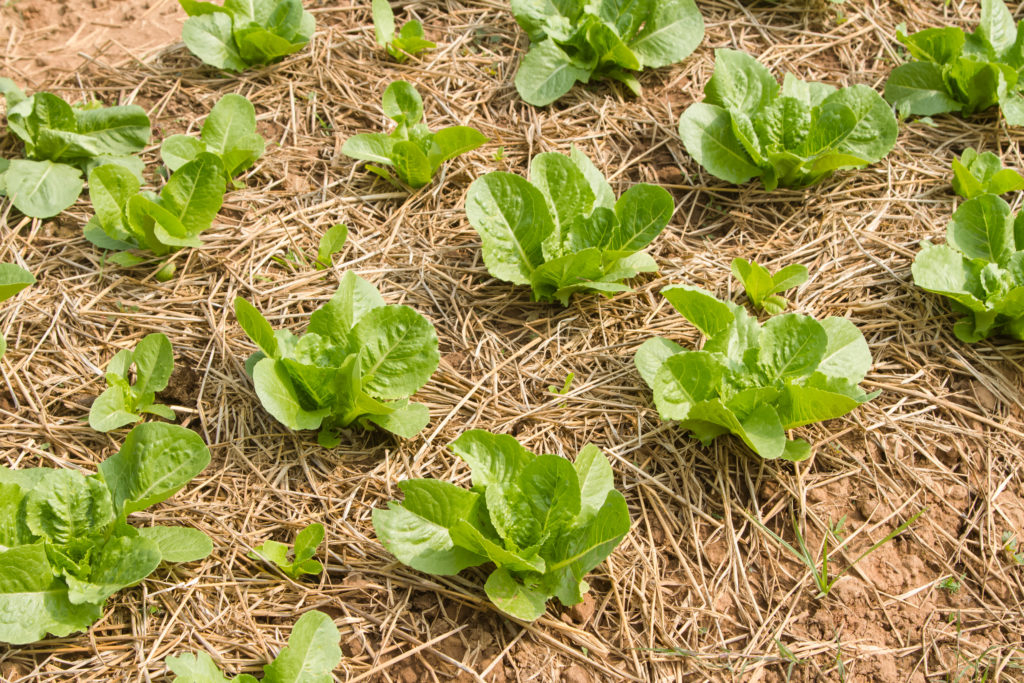
Regional vegetable gardening tips
These suggestions are divided into 4 major geographical areas: North and East and Midwest (zones 2 in the northernmost areas to 6 along the coast), the South (zones 7 in the north to 10 in the far south), the Southwest and California (zones 7 in the coolest areas to 11), and the Northeast (zones 5 in the highest elevations to 8 along the coast).
North and East and Midwest
- Succession plantings of lettuce, beets, and carrots should be made from now until August, every 2 or 3 weeks, to provide a constant supply.
- Set out any time during the month, successive starts of cabbage, broccoli, and cauliflower plants for late-season harvest.
- Plants of tomatoes, eggplants, and peppers can go in the garden as soon as the danger of frost is past. Harden off warm-weather starts before setting them in the garden.
- Beans, corn, cucumbers, melons, potatoes, and squash may be planted in open ground in by mid-month, assuming the ground is not too cold. Sow bush beans 1 inch deep, 3 inches apart in rows 18 inches apart. Pole beans go into hills, 4 to 8 seeds to a hill; later thin to 2 or 3 plants.
- Plant tomatoes in well-fertilized soil and strong supports. Work in phosphate and potash rock; tomatoes require little nitrogen. Keep tomatoes well-watered.
- Side dressings of complete fertilizer or aged compost will help along with all young seedling plants.
- If the season is mild, plant early corn. Add plenty of compost and a pound each of pulverized phosphate rock and potash rock to every 10 square feet of soil.
- Early thinning of plants in rows is important–overcrowding will lead to poor development. Thin bush beans, 4 inches apart; beets 3 inches apart; carrots, 2 inches apart; chard 6-8 inches; corn, 10-12 inches; lettuce 6-10 inches; New Zealand spinach, 12-18 inches; onions, 2-3 inches; peas, 2-3 inches; radishes, 2 inches; rutabagas, 4-5 inches; spinach, 3-4 inches; turnips, 3-4 inches. Replanting thinnings is rarely successful.
The South
- Direct sow warm-weather crops: bush and pole lima beans, pole snap beans, cantaloupes, celery, collards, cucumbers, gourds, New Zealand spinach, okra, black-eyed peas, and crowder peas, pumpkins, rutabagas, squash, sunflower, turnips, and watermelon (if there is room). Sow a second planting of corn. Plant sweet potato slips, tomatoes, eggplants, collards, peanuts, and peppers. Plant cabbage for a fall crop.
- Plant seed of edible soybeans.
- Cut okra pods before they mature, so the plants will continue to bear all season. Plant in wide rows with stalks every 2 or 3 feet.
- Set out tomato plants. Plant 4 to 6 inches deep, water well, and shade for 3 days. Pinch out suckers that develop between the main stalk and the branches while they are quite small. Prune to 2 stems. This will prevent them from utilizing plant food and making too much foliage. Stake with 5-foot stakes.
- Stake tomatoes, eggplants, and peppers when about one foot high.
- Succession plantings: Set plants of eggplant, pimento, and hot and sweet peppers where heads of cabbage, lettuce, mustard, and other cool-weather crops have been harvested.
Southwest and California
- Plant warm-weather crops now: bush and pole beans, lima beans, beets, cabbage, cantaloupes, casaba, cauliflower, celery, chard, sweet corn, Chinese and Armenian cucumbers, eggplants, gourds, leaf lettuce (in shade), lima beans, melons, New Zealand spinach, okra, peppers, pumpkins, radish, salsify, squash tomatoes. Train Chinese and Armenian cucumbers, pole beans, and tomatoes on stakes.
- Plant heat-loving vegetables in deeply composted holes: lima beans, summer squash, peppers, eggplant, and tomatoes.
- Tomatoes: a trellis-supported tomato will be more productive than one that sprawls on the ground. Set a trellis before the plant is in the ground for more than 3 weeks. Train each branch as it grows. Tie stems in loosely so as not to cut into the branch. Set tomatoes deeper in the garden than they were in the seedbed.
- Make successive plantings of vegetables every 10 days.
- Watercress can be planted in a shallow tub. Leaf lettuce can be planted in the shade.
- Plant summer cover crops of drought-resistant legumes: tepary and black-eye beans.
- Mulch heavily with compost to help retain soil moisture and improve soil tilth.
- Irrigate thoroughly once a week. Gently dig around roots to see if plants have sufficient moisture. Water at the base of plants.
- Don’t work with beans or tomato vines when they are wet. Fungal diseases are easily spread in drops of water.
Northwest
- All plants may be set out as soon as the last frost date has passed: cabbage, cauliflower, cucumbers, peppers, and tomatoes.
- Plant cabbage, cauliflowers, Brussels sprouts, and kale before mid-month.
- Direct seed pole and bush beans and midseason sweet corn. Sow pumpkin and squash toward the end of the month.
- Make successive plantings at 10-day intervals.
- Plant potatoes in well-drained, fertile soil.
- Thin plants that are already in the garden, and continue cultivation and weeding.
- Stop cutting asparagus after the middle of the month.
All regions things to do in May
Prepare to plant eggplant, melons, squash, and zucchini
Early in May prepare the planting spots for tender eggplant, squashes, melons, and zucchini. Dig holes 12 inches square, 12 inches deep, and 3 feet apart. Add a forkful of well-rotted compost or manure to the bottom of the hole and then refill the hole. Draw soil from the surrounding area to form a mound over each hole. At the end of the month, sow three seeds on each mound. When the seedlings come up, clip away the two weakest and leave the strong seedling to grow on. If you are planting starts, set one on each mound in early June. Read more: Peppers, Melons, and Eggplants Hate the Cold
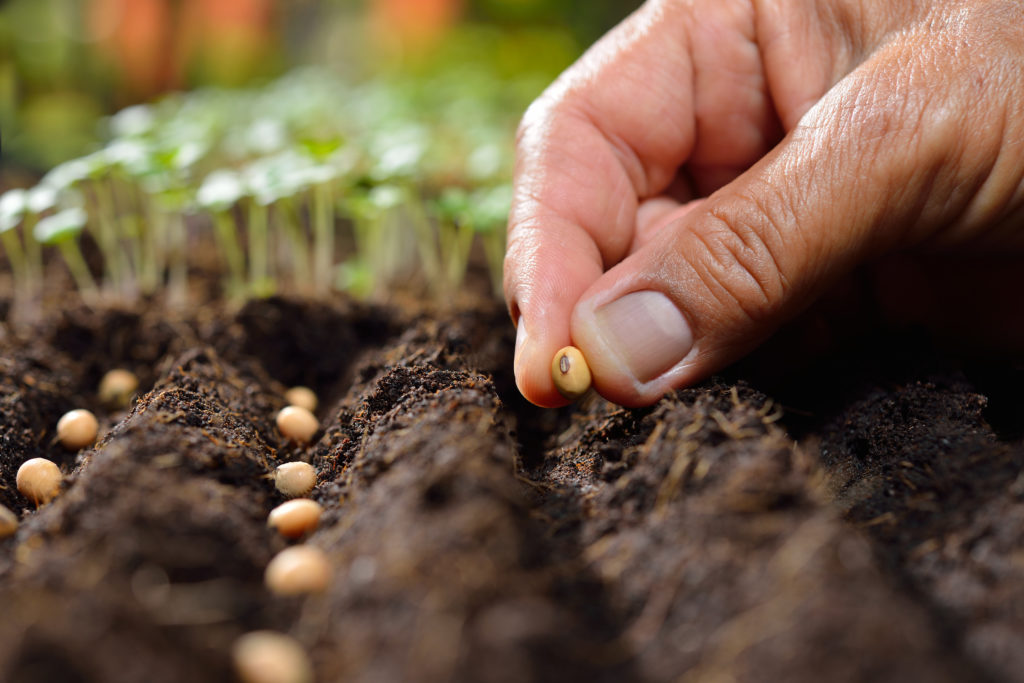
Prepare and plant pole and runner beans
Early in the month prepare to plant pole and runner beans. Dig a trench 18 inches wide and 12 inches deep. Add several inches of well-rotted compost or manure to the trench and backfill. In the second half of the month, sow bean seeds. Set them 3 inches deep and 9 to 12 inches apart in two rows 12 to 15 inches apart. At sowing time, set bean poles in place alongside each side of the bean row. Set poles at an angle and tie opposing poles together near their tops. You can strengthen the poles with horizontal struts. Alternatively, sow the seed alongside 6-foot canes erected in the form of a wigwam and tied together near their tops. Read more: How to Grow Beans
Prepare to plant tomatoes
Early in the month, prepare planting spots for tomatoes. Dig holes 12 inches square, 12 inches deep, and 2 to 3 feet apart. (Space holes 2 feet apart for determinate tomatoes; 3 feet or more apart for indeterminate tomatoes.) Add a forkful of well-rotted compost or manure to the bottom of the hole and then refill the hole. Draw soil from the surrounding area to form a mound over each hole. Tomatoes starts can be safely set in the garden when nighttime temperatures average 55°F/13°C, toward the end of this month or early in June. Tomatoes planted earlier should be protected from cold nights. Read more: How to Grow Tomatoes
Harden-off starts
Spring cabbages, carrots, lettuce, and broad beans growing under cloches of plastic tunnels can be hardened off now. This process of gradual exposure to outdoor temperatures can be carried out over three weeks so that the plants harden-off gradually. Lift covers a few inches each day, increasing the gap by an inch or two at intervals over four or five days.
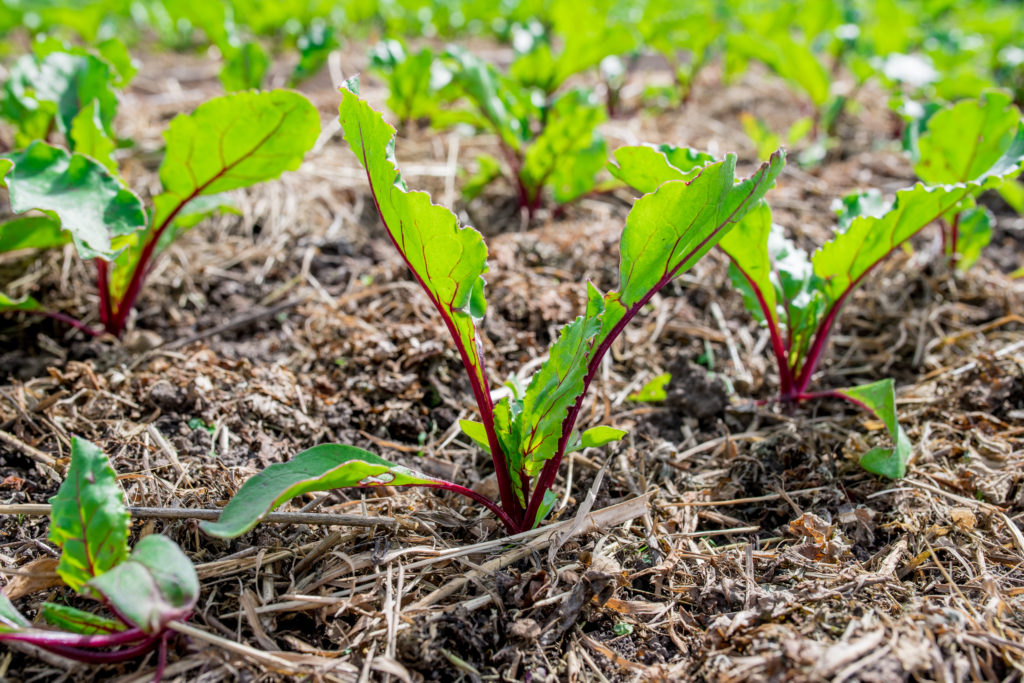
Sow beets
About the middle of the month, sow seeds of long-rooted beets–Cylindra and Rodina are two–which grow well in warmer months. Sow seed 1 inch apart and cover with ¼ inch of compost. Later, thin plants to 3 inches apart. Keep soil evenly moist to produce tender roots. Read more: How to Grow Beets
Set out Brussels sprouts
In cool-summer northern regions, set out Brussels sprouts starts this month for summer-to-fall harvest. (In warm-winter regions, wait to plant Brussels sprouts in late summer and fall.) Set plants 1 ½ to 2 feet apart. Keep plants growing vigorously by keeping the soil evenly moist. Read more: How to Grow Brussels Sprouts
Sow carrots
Sow maincrop carrots in May. Carrots grow best in light, sandy, stone-free soil. The varieties Imperator or Gold Pak–which grow roots to 9 inches long–are good choices in light soil. In shallow, rocky, or clay soil, plant the varieties Chantenay or Nantes with roots that grow 6 or 7 inches long. Sow successive crops at three-week intervals. Read more: How to Grow Carrots
Set out cauliflower
Cauliflower grows best where temperatures do not get too hot (above 75°F) or too cold (down to the low 30s°F–light frost will not hurt cauliflowers). Growing temperatures in the mid-60s°F are optimal. Set out cauliflower starts sown indoors last month when both the soil and air temperature is at least 50°F. Plant cauliflower starts 24 inches apart in rows 24 inches apart. Place a bottomless paper cup around each plant to protect the plants from cutworms. Read more: How to Grow Cauliflower
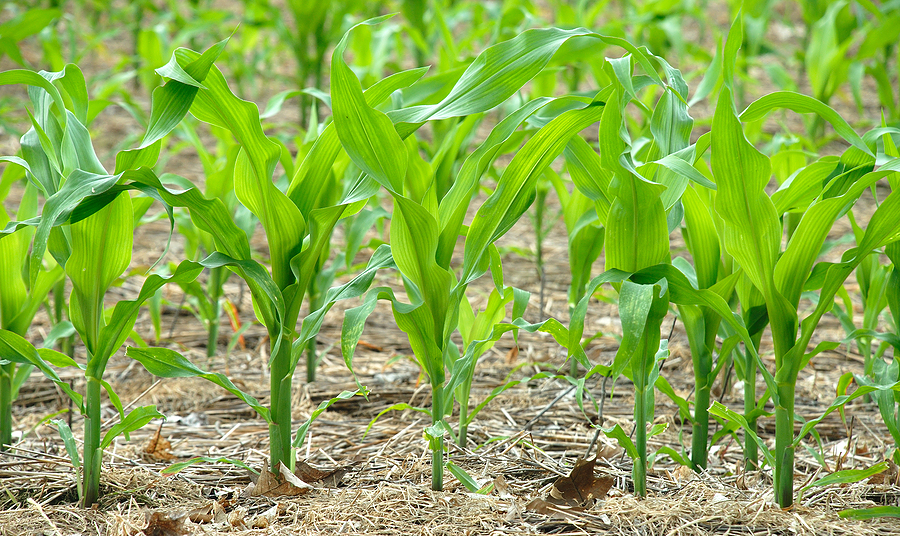
Sow sweet corn
Sow sweet corn when all danger of frost is past. Sow seeds any time average temperatures are expected to stay within a range of 40°F at night to a high of 85°F during the day. Prepare the planting area in advance by working in an inch of well-rotted manure. Sow seed 1½ inches deep in groups of three, at intervals of 18 inches apart. Thin to the strongest plant a couple of weeks after the seedlings emerge. Sow corn in a number of short rows arranged in a rectangular block. Block sowing will facilitate pollination; corn is pollinated by wind-borne pollen, which cannot travel far. Read more: How to Grow Corn
Start cucumbers indoors
Start cucumbers indoors about three weeks before night temperatures will average 55°F. Seedlings can not go into the garden until all danger of frost is past. Prepare the growing site advance: dig holes 12 inches square, 12 inches deep, and 3 to 4 feet apart for trailing plants, and 12 inches apart for climbing plants. Add 3 to 4 inches of well-rotted compost or manure to the bottom of the hole and then refill the hole. Draw soil from the surrounding area to form a mound about 4 inches high. Plant out cucumber starts when the weather has sufficiently warmed. Read more: How to Grow Cucumbers
Protect potatoes
Potatoes planted last month should be protected from late frosts. Set floating row covers of spun poly over potato plants when night temperatures are predicted to dip. Read more: How to Grow Potatoes
Salad crops successions
Make further sowings of salad crops–lettuces and spinach–to maintain a continuous cut-and-come-again harvest. Continue to sow lettuce and spinach every two weeks until about eight weeks before maximum daytime temperatures are expected to average about 80°F. Where summer temperatures do not average 80°, continue successive sowings until about six weeks before the first frost is expected.
New Zealand spinach
Sow heat-tolerant New Zealand spinach when the danger of frost has passed. This crop is a summer substitute for spinach in warm-summer regions. New Zealand spinach is tolerant of sandy, salty soil. It loves the sun and doesn’t like shade. Mature plants spread 1 to 2 feet. Read more: How to Grow New Zealand Spinach
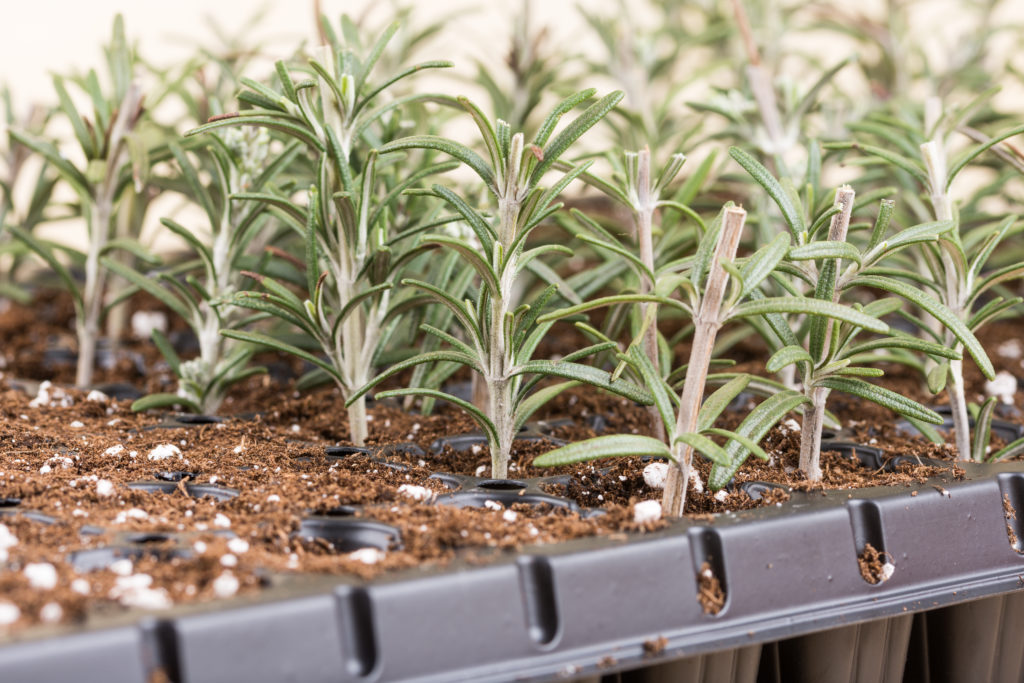
Herbs
Make further sowings of chervil, dill, fennel, hyssop, and parsley. Thin seedlings to 3 inches apart.
- Basil seedlings can be set out late this month when the danger of frost has passed. Set seedlings about 15 inches apart and water well in the early stages until the plants are established. Sow basil seeds 1-inch deep garden beds that have warmed or directly into the cold frame.
- Cuttings. Take cuttings 3 to 4 inches long of pot marjoram, rosemary, sage, and thyme from last year’s growth. Strip the lower leaves from the cutting, and with a sharp knife cut straight across the stem below a joint. Set the cuttings into a sand-filled pot or into open, sandy soil. If the weather is cold or windy, give cloche protection.
- Division. Mint and thyme which have overgrown pots or have become straggly in the garden can be divided or rooted now. The tiny roots at each joint on the runners will set new roots if buried in fine soil.
Click here for 50 herbs articles.
Pest control
Pests become active in May. Begin scouting the garden for pests and take appropriate action. Aphids will reappear this month. Knock them off plants with a stream of water. Protect tender shoots from cutworms with paper collars around newly set seedlings. Control slugs and snails by placing sandpaper collars around seedlings. Place loosely rolled wet newspaper “traps” around the garden to collect snails, slugs, and earwigs during the day; these pests seek a cool, moist place to hide during the day. Read more: Organic Pest Control
Watering
Watering new sowings and seedlings is very important. A check to growth can be disastrous to crops grown from seed. Normal growth depends upon an even supply of water. Check the garden daily to make sure the soil stays evenly moist. Put your finger in the soil, if it comes away just moist, the watering is good. If your finger comes away from the soil dry, water. Read more: Critical Times to Water Vegetables
Also of interest:
May Vegetable Garden Zone-by-Zone
Garden Planning Books at Amazon:
- Vegetable Garden Grower’s Guide
- Tomato Grower’s Answer Book
- Vegetable Garden Almanac & Planner
- Kitchen Garden Grower’s Guide Vegetable Encyclopedia



